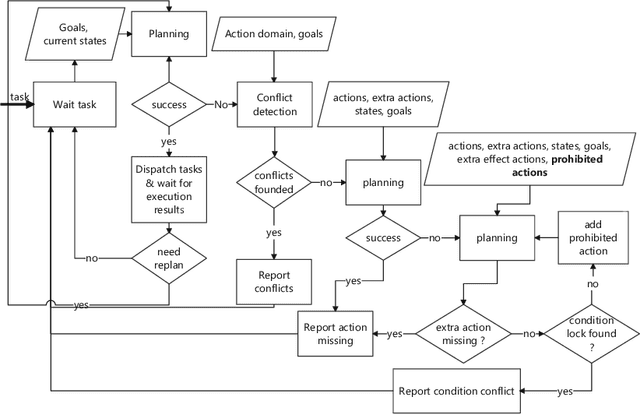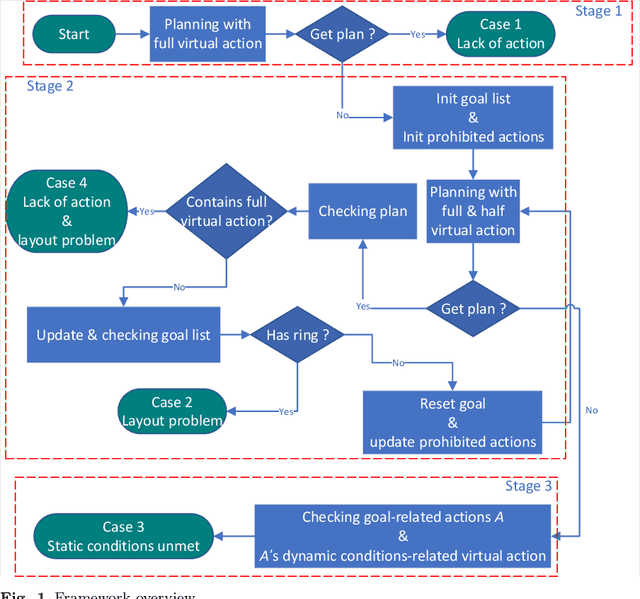Guowei Cui
Task planning and explanation with virtual actions
Jan 10, 2022



Abstract:One of the challenges of task planning is to find out what causes the planning failure and how to handle the failure intelligently. This paper shows how to achieve this. The idea is inspired by the connected graph: each verticle represents a set of compatible \textit{states}, and each edge represents an \textit{action}. For any given initial states and goals, we construct virtual actions to ensure that we always get a plan via task planning. This paper shows how to introduce virtual action to extend action models to make the graph to be connected: i) explicitly defines static predicate (type, permanent properties, etc) or dynamic predicate (state); ii) constructs a full virtual action or a semi-virtual action for each state; iii) finds the cause of the planning failure through a progressive planning approach. The implementation was evaluated in three typical scenarios.
Semantic Task Planning for Service Robots in Open World
Nov 01, 2020



Abstract:In this paper, we present a planning system based on semantic reasoning for a general-purpose service robot, which is aimed at behaving more intelligently in domains that contain incomplete information, under-specified goals, and dynamic changes. First, Two kinds of data are generated by Natural Language Processing module from the speech: (i) action frames and their relationships; (ii) the modifier used to indicate some property or characteristic of a variable in the action frame. Next, the goals of the task are generated from these action frames and modifiers. These goals are represented as AI symbols, combining world state and domain knowledge, which are used to generate plans by an Answer Set Programming solver. Finally, the actions of the plan are executed one by one, and continuous sensing grounds useful information, which make the robot to use contingent knowledge to adapt to dynamic changes and faults. For each action in the plan, the planner gets its preconditions and effects from domain knowledge, so during the execution of the task, the environmental changes, especially those conflict with the actions, not only the action being performed, but also the subsequent actions, can be detected and handled as early as possible. A series of case studies are used to evaluate the system and verify its ability to acquire knowledge through dialogue with users, solve problems with the acquired causal knowledge, and plan for complex tasks autonomously in the open world.
 Add to Chrome
Add to Chrome Add to Firefox
Add to Firefox Add to Edge
Add to Edge